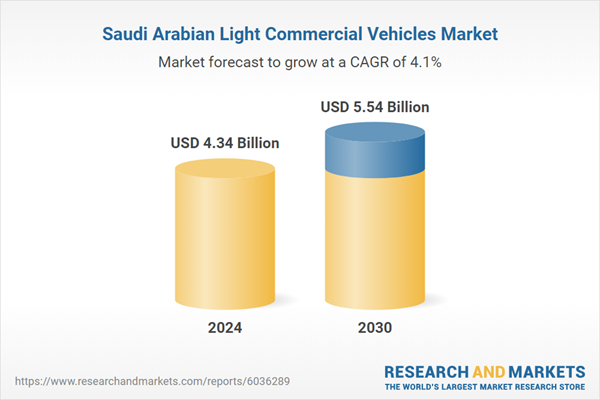Speak directly to the analyst to clarify any post sales queries you may have.
10% Free customizationThis report comes with 10% free customization, enabling you to add data that meets your specific business needs.
Increasing demand for efficient transportation of goods has pushed businesses to invest in versatile and durable light commercial vehicles such as vans and pickups. A shift toward vehicle electrification and digitization is also influencing buyer preferences, with logistics firms and fleet operators actively exploring models with lower emissions and smart telematics integration. The market is further benefiting from rising small and medium enterprise activity and favorable financing options that reduce entry barriers for commercial vehicle ownership.
Market Drivers
Growth in E-Commerce and Last-Mile Delivery Demand
The surge in e-commerce has significantly amplified the need for efficient last-mile delivery networks, making light commercial vehicles indispensable for logistics operators. As consumer expectations for faster and more frequent deliveries grow, businesses are optimizing their fleet operations by deploying agile and compact vehicles capable of navigating urban and suburban environments. Light commercial vehicles offer a flexible platform for handling small-to-medium parcel volumes while ensuring timely dispatch across diversified delivery routes. This demand extends beyond large corporations to small enterprises and courier services that rely on LCVs for their daily operations.For instance, in January 2025, Saudi Arabia’s e-commerce sales via Mada cards surged 44.64% year-on-year to SAR 20.87 billion ($5.56 billion), with transaction volumes rising 33.65% to 111.42 million. This growth reflects increasing digital payment adoption, widespread use of NFC-enabled devices, and rising consumer spending power. Physical retail point-of-sale sales reached SAR 58.21 billion, up 8.19% year-on-year, driven by sectors like restaurants, cafes, and food outlets accounting for nearly 30% of spending. Jewelry sales led POS category growth with a 24.71% annual increase, while clothing and footwear rose 14% to SAR 3.68 billion. Miscellaneous goods and services spending totaled SAR 7.07 billion, representing 12% of POS expenditure.
Key Market Challenges
High Acquisition and Maintenance Costs of Advanced LCVs
While modern light commercial vehicles offer improved fuel efficiency, telematics, and emissions performance, the upfront costs for acquiring such models can be prohibitive for small businesses or budget-conscious operators. Vehicles equipped with advanced driver-assistance systems (ADAS), lightweight materials, and alternative fuel technologies often carry premium price tags.For companies seeking to transition to electric or hybrid LCVs, the lack of cost parity with conventional internal combustion engine models remains a key deterrent. Beyond purchase costs, maintenance expenses for high-tech systems, battery replacements, and software updates can burden operational budgets, especially in low-margin industries. Even routine servicing can be expensive due to the growing complexity of vehicle architecture. These cost challenges can delay fleet renewal cycles and limit the adoption of newer, more efficient models.
Key Market Players
- Renault (Wallan Trading Company)
- Toyota (Abdul Latif Jameel Company Ltd.)
- Ford (Mohamed Yousuf Naghi Motors Co.)
- ISUZU (Al Yemni Motors Company)
- Daimler (Juffali Commercial Vehicles
- Mitsubishi (ALESAYI MOTORS)
- Nissan Saudi Arabia Co. LTD
- General Motors Company
- Hyundai motor Company (Wallan Trading Company)
- Audi Volkswagen Middle East FZE
Report Scope:
In this report, the Saudi Arabia Light Commercial Vehicles Market has been segmented into the following categories, in addition to the industry trends which have also been detailed below:Saudi Arabia Light Commercial Vehicles Market, By Vehicle Type:
- Light Bus
- Light Trucks and Chassis Cabs
- Vans
Saudi Arabia Light Commercial Vehicles Market, By End User:
- Government
- Private
Saudi Arabia Light Commercial Vehicles Market, By Application:
- Ambulance
- Logistics & Goods Carrier
- Refrigerated Goods Carrier
- Shuttle Buses
- Oil & Gas
- Waste Management
- Cargo
- Construction Material
- Others
Saudi Arabia Light Commercial Vehicles Market, By Region:
- Northern & Central
- Western
- Southern
- Eastern
Competitive Landscape
Company Profiles: Detailed analysis of the major companies present in the Saudi Arabia Light Commercial Vehicles Market.Available Customizations:
With the given market data, the publisher offers customizations according to the company’s specific needs. The following customization options are available for the report.Company Information
- Detailed analysis and profiling of additional market players (up to five).
This product will be delivered within 1-3 business days.
Table of Contents
Companies Mentioned
- Renault (Wallan Trading Company)
- Toyota (Abdul Latif Jameel Company Ltd.)
- Ford (Mohamed Yousuf Naghi Motors Co.)
- ISUZU (Al Yemni Motors Company)
- Daimler (Juffali Commercial Vehicles
- Mitsubishi (ALESAYI MOTORS)
- Nissan Saudi Arabia Co. LTD
- General Motors Company
- Hyundai motor Company (Wallan Trading Company)
- Audi Volkswagen Middle East FZE
Table Information
| Report Attribute | Details |
|---|---|
| No. of Pages | 85 |
| Published | September 2025 |
| Forecast Period | 2024 - 2030 |
| Estimated Market Value ( USD | $ 4.34 Billion |
| Forecasted Market Value ( USD | $ 5.54 Billion |
| Compound Annual Growth Rate | 4.1% |
| Regions Covered | Saudi Arabia |
| No. of Companies Mentioned | 10 |









